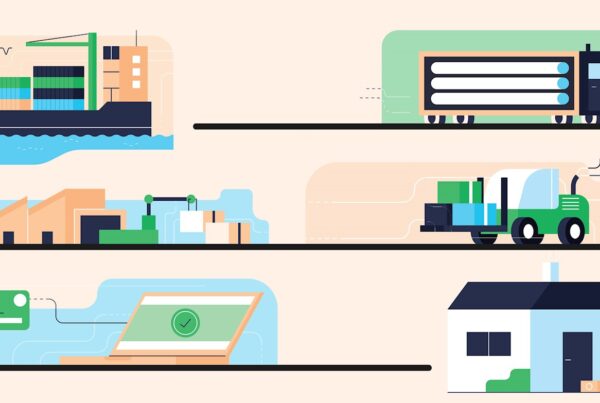Last year witnessed an unusually large number of devastating natural disasters all across the world, from the multiple hurricanes which have battered South America and the United States, including Hurricane Michael most recently, to the deadly earthquake and tsunami in Indonesia which claimed over 2,000 lives. These climatic catastrophes are however, unlikely to let up, with the latest data by the UN on climate change showing that unless governments and societies take drastic steps to reduce greenhouse gas emissions significantly, the impact and regularity of natural disasters will only worsen in the future.
/nature-damage.png)
Mother Nature’s Disruption To Supply Chains
The tragic consequences that natural disasters can cause to human life is readily apparent and covered extensively by the news media. What is less recognized, however, is that natural disasters also wreak immense havoc on global supply chains, because they result in the cancellations of flights, the closure of ports, and the shutting down of highways. In this way, the delivery of raw materials, consumer goods, and other components are delayed, sometimes substantially, which can seriously harm the bottom line of businesses.
For example, the catastrophic Tohoku earthquake and tsunami a few years ago resulted in a massive US$210 billion in costs for Japan. Unable to import or export needed parts, Toyota, GM and Nissan all closed down their facilities temporarily in Japan and the United States. Similarly, when Puerto Rico was struck by Hurricane Maria earlier this year, the supply chain of two of the island’s most important industries, pharmaceuticals, and medical devices, ground to a complete halt.
/factory-shutdown.png)
How then, can your business protect itself from the risks of such overwhelming supply chain disruptions? The key is to see them coming before the mainstream news media even start covering them.
Access To Real Time Data Via Risk Chain
How much more effective would your planning be if you could get real time data to help you identify potential risks before they can cause havoc? Risk Chain, an exclusive feature of the Gravity platform, enables you to do just that.
Risk Chain monitors as many as 40,000 data sources in real time, including weather-feeds, port closures, traffic congestion and so forth to immediately inform Gravity Software users of where a supply chain disruption may occur and how that could affect their business. This data is displayed in an easy to understand graphical interface.
Consider how quickly you could react and adjust if you know in real time that a storm at sea may affect trade lanes. You could ask yourself whether you have an order on any vessels in those lanes, the priority of that cargo and how you should adjust the shipping route. In simple terms, context matters. The faster you’re made aware of “breaking news,” the quicker you can address and mitigate potential issues; you become proactive, not reactive.
Contact us if you’d like to use Risk Chain for your business
/risk-chain.png)
In addition to extreme weather events, Risk Chain also provides data on a range of other potential supply chain disruptions, such as political protests, transport strikes, economic upheaval or infrastructure damage, allowing you to foresee and minimize the damage that an external event can cause to your supply chain. We like to say that with Risk Chain, we can tell you today what is going to happen tomorrow.
Data And Insights Are The Keys To Business Success
The more informed you are about what is going on regarding your business, the better you can make strategic data led decisions that can help your business grow. Risk Chain provides you with data about supply chain disruptions, but you shouldn’t limit your knowledge only to that. You should aim to achieve visibility and transparency into all elements of your supply chain, including the status of vendor bookings, purchase orders and the movement of inventory, using an automated system such as Gravity Solutions which updates data instantly rather than relying on manual updates which are slow, error-prone and out of date.




